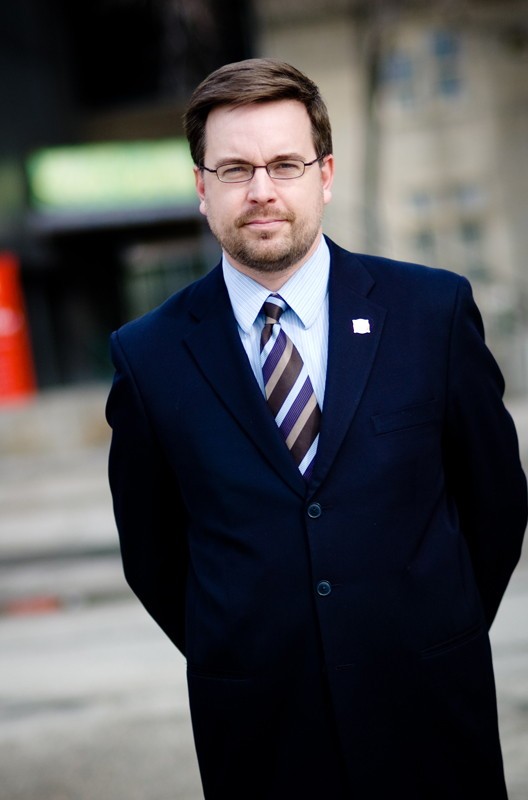Strike averted, but questions remain
U of W administration will not rule out tuition hike
After weeks marred by tension between the University of Winnipeg Faculty Association (UWFA) and the U of W administration, many were relieved when the two parties ratified a hard-fought collective agreement.
Now, almost two weeks after the strike was averted, several questions remain over how the U of W will fund the 5.41 per cent salary increase agreed to on March 11, as well as the continued expansion of the campus.
According to David Jacks, resource coordinator for the Canadian Federation of Students Manitoba, there remains a great deal of tension between the two parties.
“The fact that faculty and students were prepared to take to the street in support of fair wages for our profs and librarians shows the severity of the situation,” he said.
“How on earth do they (the administration) project to pay for all the new campus expansion including new faculty and staffing?” he asked, pointing to the fact that the administration originally stated that they could not afford to meet the faculty’s demands.
The new collective agreement laid out a plan to give faculty members a 5.41 per cent salary increase over three years.
Throughout the tumultuous negotiation process, the UWFA had remained firm on asking for an 8.4 per cent wage increase in order to bring salaries in line with other Manitoba universities.
Meanwhile, the administration was offering a 3.7 per cent increase over three years, saying that the UWFA’s request would require a 10 per cent tuition increase.
“As we have seen in the past, the university will turn to students to pay ... through tuition fee hikes,” said Jacks.
Dan Hurley, the associate vice president of external affairs at the U of W, would not rule out an increase in tuition.
However, he said that the administration will continue to follow provincial direction and policy on tuition increases.
“We will see what is in the provincial budget and what they will give in terms of an operating grant and what they will allow for universities in terms of tuition increases,” he said, adding that the 5.41 per cent increase has been budgeted within the existing operating budget.
In 2010, the provincial government had a five per cent cap on tuition increases in place.
However, that may change depending on the contents of the budget, which will be tabled in the Manitoba legislature on April 12, said Hurley.
The University of Winnipeg currently faces a significant funding disparity compared to the University of Manitoba and Brandon University.
According to Hurley’s most up-to-date estimates, the university received $6,800 per student compared to the U of M at $10,500 and Brandon University at $11,700 per student.
“It (the funding disparity) factors into everything we do, whether it’s salaries or whether it’s just our general operating budget,” said Hurley.
Shannon Sampert, a U of W politics professor and UWFA spokesperson, believes that the funding problem is more nuanced and has expressed concerns over the expansion of the university’s administration since Lloyd Axworthy became president in 2004.
“There was concern expressed by the association members that there has been a larger number of VPs (vice presidents) and AVPs (associate vice presidents) than ever before,” she said.
A UWFA press release stated that the U of W spends three times as much proportionally on administration, compared to the University of Manitoba.
Hurley believes that comparing the U of W to the U of M is like comparing “apples with oranges.”
“We are comparable to other institutions our size in terms of administrative costs,” he said, citing smaller universities like the University of Lethbridge in Alberta and Trent University in Ontario.
Published in Volume 65, Number 24 of The Uniter (March 24, 2011)







